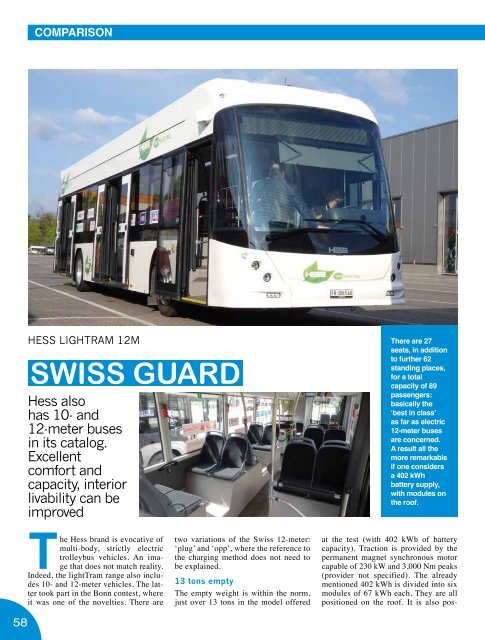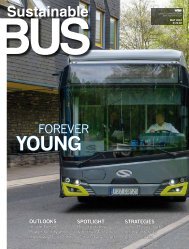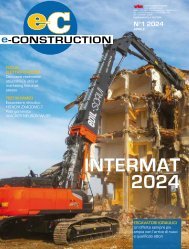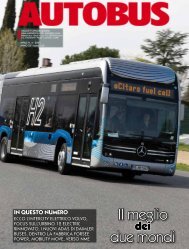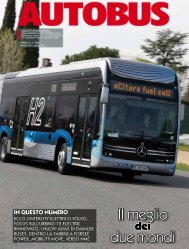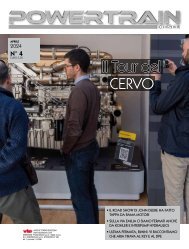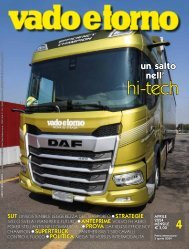2023-09 SUSTAINABLE BUS
A new issue of Sustainable Bus is out today. In this upcoming edition, we’ve curated a diverse and comprehensive range of topics that spotlight the latest developments in the world of sustainable mobility. From cutting-edge technological advancements to market insights and industry transformations, this issue promises to be a captivating exploration of the future of public transportation. What you could fine inside? Well, a market insight will offer you a detailed look at the European e-bus market, providing you with a comprehensive understanding of the mid-2023 results. The leading e-bus market in Europe is still UK: therefore, we focused our attention on that specific market with a report that sums up strategies, focus, goals of the most prominent industry players. A technology spotlight on the delicate topic of batteries, authored by Claudius Jehle, look at battery management and strategies to ensure the smooth and cost-effective operation of electric buses (with a focus on a case study from BVG). Among the pillars of our upcoming issue you’ll find a detailed journey around the European industrial bus&coach landscape. Goal? Providing our readers insights into the changing dynamics among key OEMs in the region. We’ll be then taking you behind the scenes at the Yutong factory in Zhengzhou, that we had the pleasure of visiting in June. Let’s then delve into Iveco Bus’s growing efforts in the zero-emission bus field. Finally, last but not least, a nearly-20-pages comparison between seven 12-meter battery-electric buses, gathered together in Bonn also this year by the German magazine Omnibusspiegel. You’ll find both established players and newcomers side by side: Ebusco 3.0, Hess lighTram 12m, Ikarus 120e, Iveco E-Way, Mercedes eCitaro with new batteries, Otokar e-Kent C, Quantron Cizaris 12 Ev.
A new issue of Sustainable Bus is out today. In this upcoming edition, we’ve curated a diverse and comprehensive range of topics that spotlight the latest developments in the world of sustainable mobility. From cutting-edge technological advancements to market insights and industry transformations, this issue promises to be a captivating exploration of the future of public transportation.
What you could fine inside? Well, a market insight will offer you a detailed look at the European e-bus market, providing you with a comprehensive understanding of the mid-2023 results. The leading e-bus market in Europe is still UK: therefore, we focused our attention on that specific market with a report that sums up strategies, focus, goals of the most prominent industry players.
A technology spotlight on the delicate topic of batteries, authored by Claudius Jehle, look at battery management and strategies to ensure the smooth and cost-effective operation of electric buses (with a focus on a case study from BVG).
Among the pillars of our upcoming issue you’ll find a detailed journey around the European industrial bus&coach landscape. Goal? Providing our readers insights into the changing dynamics among key OEMs in the region.
We’ll be then taking you behind the scenes at the Yutong factory in Zhengzhou, that we had the pleasure of visiting in June. Let’s then delve into Iveco Bus’s growing efforts in the zero-emission bus field.
Finally, last but not least, a nearly-20-pages comparison between seven 12-meter battery-electric buses, gathered together in Bonn also this year by the German magazine Omnibusspiegel. You’ll find both established players and newcomers side by side: Ebusco 3.0, Hess lighTram 12m, Ikarus 120e, Iveco E-Way, Mercedes eCitaro with new batteries, Otokar e-Kent C, Quantron Cizaris 12 Ev.
You also want an ePaper? Increase the reach of your titles
YUMPU automatically turns print PDFs into web optimized ePapers that Google loves.
COMPARISON<br />
HESS LIGHTRAM 12M<br />
SWISS GUARD<br />
Hess also<br />
has 10- and<br />
12-meter buses<br />
in its catalog.<br />
Excellent<br />
comfort and<br />
capacity, interior<br />
livability can be<br />
improved<br />
There are 27<br />
seats, in addition<br />
to further 62<br />
standing places,<br />
for a total<br />
capacity of 89<br />
passengers:<br />
basically the<br />
‘best in class’<br />
as far as electric<br />
12-meter buses<br />
are concerned.<br />
A result all the<br />
more remarkable<br />
if one considers<br />
a 402 kWh<br />
battery supply,<br />
with modules on<br />
the roof.<br />
sible to opt for two further capacity<br />
variations: 312 and 468 kWh. The bus<br />
tested in Bonn has three electrically powered<br />
doors, the front one with a single<br />
leaf and the other two with double<br />
leaves. There are 27 seats (five-seater<br />
is not included), in addition to further<br />
62 standing places, for a total capacity<br />
of 89 passengers: basically the ‘best in<br />
class’ as far as electric 12-meter buses<br />
are concerned. A result all the more remarkable<br />
if one considers a 402 kWh<br />
battery supply, with modules entirely<br />
distributed on the roof. Interiors. The<br />
height is two meters, which is particularly<br />
low. The seat supports, designed<br />
by Ster (New city model), are very voluminous.<br />
This does not help one’s perception<br />
of space in the passenger compartment.<br />
As already mentioned above,<br />
there is no five-seater on the back, the<br />
third door overlooks a space dedicated<br />
to standing passengers.<br />
On the driving seat<br />
The air conditioning system is signed<br />
by Thermo King and releases 16 kW in<br />
cooling, while the heat pump guarantees<br />
11 kW.<br />
The driver’s seat is ISRI 6860/875 NTS<br />
Slim. It fits into a work area delimited<br />
by an extremely compact cockpit,<br />
equipped on the right with only kneeling,<br />
door opening and traction controls.<br />
The majority of controls are on<br />
the left, including the air-conditioning<br />
control unit. The aesthetic could be improved.<br />
The axles are both ZF: RL82EC<br />
at the front and AV133 at the rear.<br />
The Hess brand is evocative of<br />
multi-body, strictly electric<br />
trolleybus vehicles. An image<br />
that does not match reality.<br />
Indeed, the lightTram range also includes<br />
10- and 12-meter vehicles. The latter<br />
took part in the Bonn contest, where<br />
it was one of the novelties. There are<br />
two variations of the Swiss 12-meter:<br />
‘plug’ and ‘opp’, where the reference to<br />
the charging method does not need to<br />
be explained.<br />
13 tons empty<br />
The empty weight is within the norm,<br />
just over 13 tons in the model offered<br />
at the test (with 402 kWh of battery<br />
capacity). Traction is provided by the<br />
permanent magnet synchronous motor<br />
capable of 230 kW and 3,000 Nm peaks<br />
(provider not specified). The already<br />
mentioned 402 kWh is divided into six<br />
modules of 67 kWh each. They are all<br />
positioned on the roof. It is also pos-<br />
58<br />
59


